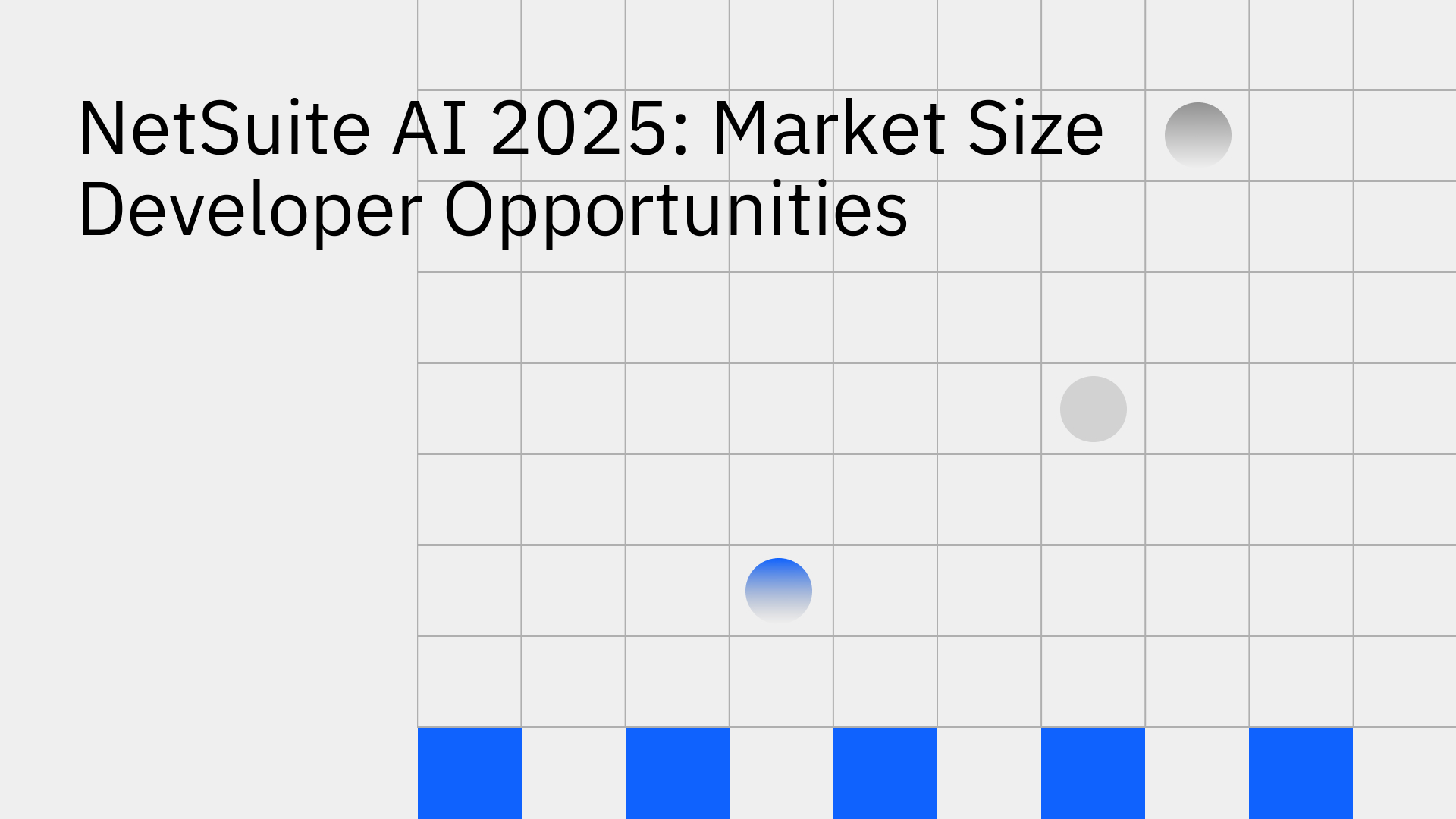Artificial intelligence has evolved from a theoretical concept into an indispensable enterprise asset. For businesses operating on NetSuite, the integration of AI is no longer a future goal but a present-day imperative for maintaining a competitive edge.
NetSuite has embraced this shift, rolling out a suite of native AI functionalities designed to improve efficiency [5]. However, a critical technical challenge remains: unlocking the full potential of these AI tools requires a constant stream of clean, real-time data, which is often trapped within NetSuite's complex data structures.
This data accessibility bottleneck creates significant opportunities for developers and consultants. Organizations are ready to invest in AI but are often hampered by the technical complexities of integrating their core ERP data with modern AI systems. They need experts who can build the robust data infrastructure required to power these initiatives.
The AI Market: A Look at the Investment Landscape
The enterprise commitment to AI is backed by substantial financial investment. Understanding the scale of this market highlights the urgency and value of developing AI-centric solutions for NetSuite.
- Global ERP Market: The global Enterprise Resource Planning (ERP) market is projected to hit $73 billion in 2025, with an annual growth rate of 11.3% [7]. Another forecast projects total ERP spending to reach $147.7 billion by 2025, with over 3.8 million companies adopting ERP solutions [8].
- Cloud Dominance: Cloud-based ERP systems now account for over 70% of the market, demonstrating a clear trend toward scalable, accessible platforms [7].
- Enterprise AI Focus: Within this landscape, AI adoption is a top priority. A recent survey showed 85% of executives view increasing AI adoption as important, yet the technical hurdles remain significant [2].
These figures confirm that businesses are allocating serious budgets to enhance their ERP systems with AI, creating immediate demand for developers who can deliver effective, data-driven solutions.
Actionable Opportunities for NetSuite Developers and Consultants
For developers, the gap between NetSuite's data and the demands of AI represents a field of opportunity. Success hinges on mastering the flow of data. Here are the key areas where developers can provide immense value.
1. Build High-Performance AI Agents and Tools
NetSuite's latest announcements at SuiteWorld 2025 emphasize a future of embedded, agentic AI [4]. However, the effectiveness of any AI agent whether for detecting financial anomalies or forecasting inventory—depends entirely on the quality and timeliness of its underlying data.
- The Problem: Traditional data extraction methods like CSV exports or nightly ETL batches introduce unacceptable latency. An AI agent operating on stale data is not just ineffective; it's a liability.
- The Solution: Developers can build truly intelligent systems by architecting a real-time data pipeline. Stacksync provides a purpose-built platform for real-time, bi-directional NetSuite integration, syncing data in milliseconds. This enables developers to feed AI models with live data, making it possible to build powerful, low-latency NetSuite AI agents for instant insights.
2. Guarantee AI Data Readiness and Quality
An AI model is only as reliable as the data it's trained on. Many NetSuite instances suffer from inconsistent, incomplete, or siloed data, which renders AI initiatives ineffective from the start.
- The Problem: Preparing data for AI is not a one-time task. It requires a continuous, reliable process to clean, transform, and consolidate data from NetSuite and other operational systems.
- The Solution: Developers can establish a "single source of truth" for AI by implementing a robust data synchronization strategy. For example, by implementing a strategic NetSuite to Snowflake two-way sync, developers can create a centralized, AI-ready data repository. Stacksync ensures data consistency across platforms, eliminating the manual data prep and quality issues that plague many AI projects.
3. Architect Scalable AI Strategy and Governance
Businesses need more than just tools; they need a coherent strategy and governance framework for deploying AI safely and effectively.
- The Problem: Companies are concerned about the security, compliance (GDPR, SOX), and risks associated with connecting their core financial data to external AI services.
- The Solution: Developers can lead by designing an AI architecture built on a secure, compliant data integration layer. Stacksync provides an enterprise-grade platform with features like OAuth, SSH tunneling, and granular access controls. By building on a secure foundation, you can provide clients with the confidence to innovate while maintaining strict data governance. This is a key differentiator when choosing a reliable enterprise data integration platform.
4. Package "AI-as-a-Service" Offerings
The most scalable opportunity lies in moving beyond one-off projects to create repeatable, subscription-based AI services.
- The Problem: Building custom integrations for every client is inefficient and doesn't scale. To productize an AI service, you need to abstract away the underlying data plumbing.
- The Solution: Leverage a reliable data integration platform to handle the complex, non-differentiating work of data synchronization. Stacksync manages the infrastructure, API rate limits, and error handling, allowing developers to focus on what they do best: building value-added AI applications. This enables the creation of scalable offerings, such as:
- A monthly AI-powered financial health check for CFOs.
- An automated supply chain risk analysis service.
- An AI-driven customer support trend analysis package.
The Future Is Real-Time
The fusion of AI and ERP is creating a paradigm shift in the enterprise technology landscape [1]. While NetSuite provides the foundational AI tools like Text Enhance and Bill Capture [3], the true transformative power is unlocked by developers who can bridge the gap between this powerful ERP and the broader AI ecosystem.
The core challenge is, and will continue to be, data access. Developers who master real-time, bi-directional data integration will be best positioned to capitalize on the immense opportunities in the NetSuite AI market. By solving the fundamental problem of data latency and fragmentation, you can empower businesses to move from merely experimenting with AI to deploying intelligent, automated systems that drive real business impact.
Ready to build the next generation of NetSuite AI solutions?
Book a demo with a Stacksync engineer today and discover how our real-time data integration platform can accelerate your development.
